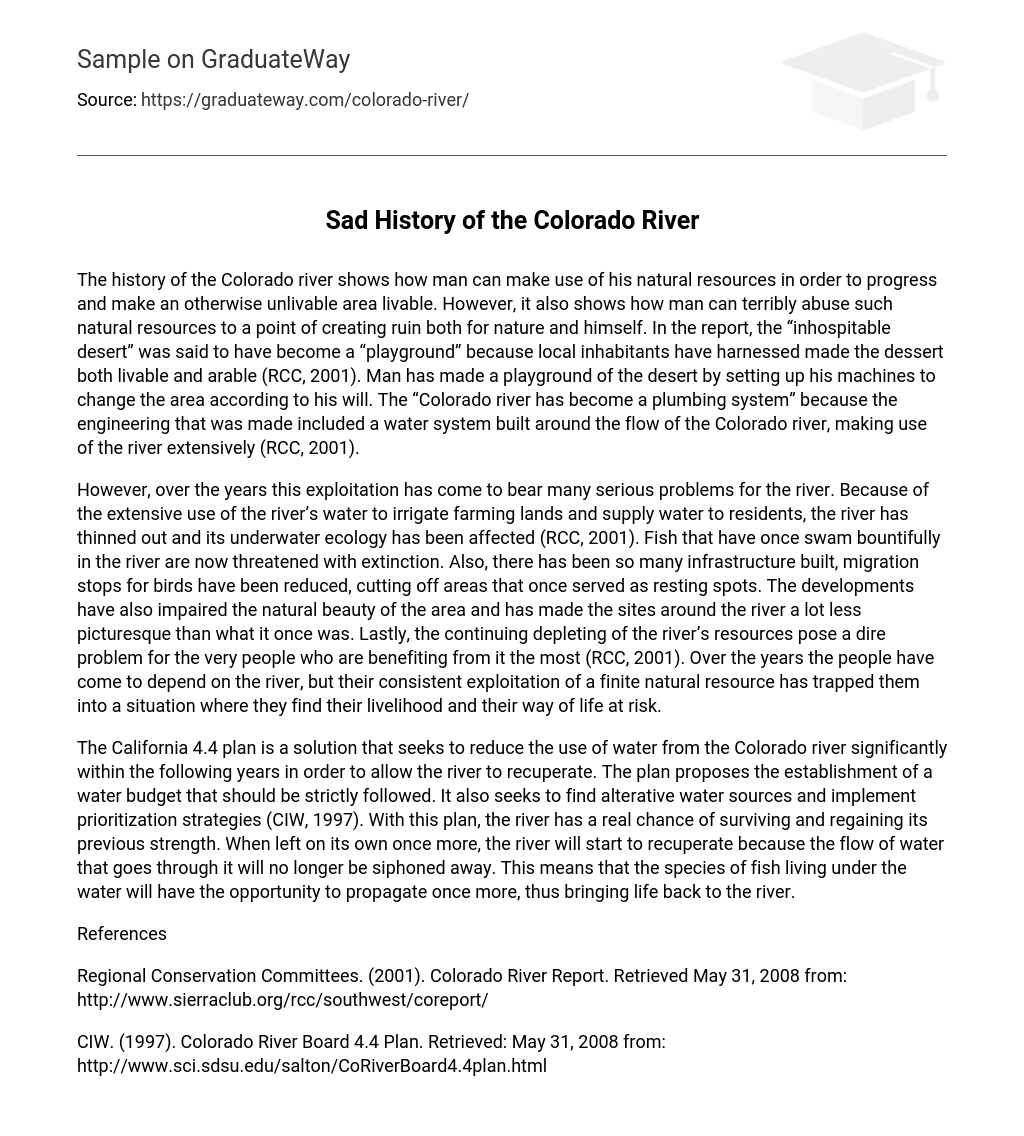The history of the Colorado river shows how man can make use of his natural resources in order to progress and make an otherwise unlivable area livable. However, it also shows how man can terribly abuse such natural resources to a point of creating ruin both for nature and himself. In the report, the “inhospitable desert” was said to have become a “playground” because local inhabitants have harnessed made the dessert both livable and arable (RCC, 2001). Man has made a playground of the desert by setting up his machines to change the area according to his will. The “Colorado river has become a plumbing system” because the engineering that was made included a water system built around the flow of the Colorado river, making use of the river extensively (RCC, 2001).
However, over the years this exploitation has come to bear many serious problems for the river. Because of the extensive use of the river’s water to irrigate farming lands and supply water to residents, the river has thinned out and its underwater ecology has been affected (RCC, 2001). Fish that have once swam bountifully in the river are now threatened with extinction. Also, there has been so many infrastructure built, migration stops for birds have been reduced, cutting off areas that once served as resting spots. The developments have also impaired the natural beauty of the area and has made the sites around the river a lot less picturesque than what it once was. Lastly, the continuing depleting of the river’s resources pose a dire problem for the very people who are benefiting from it the most (RCC, 2001). Over the years the people have come to depend on the river, but their consistent exploitation of a finite natural resource has trapped them into a situation where they find their livelihood and their way of life at risk.
The California 4.4 plan is a solution that seeks to reduce the use of water from the Colorado river significantly within the following years in order to allow the river to recuperate. The plan proposes the establishment of a water budget that should be strictly followed. It also seeks to find alterative water sources and implement prioritization strategies (CIW, 1997). With this plan, the river has a real chance of surviving and regaining its previous strength. When left on its own once more, the river will start to recuperate because the flow of water that goes through it will no longer be siphoned away. This means that the species of fish living under the water will have the opportunity to propagate once more, thus bringing life back to the river.
References
Regional Conservation Committees. (2001). Colorado River Report. Retrieved May 31, 2008 from: http://www.sierraclub.org/rcc/southwest/coreport/
CIW. (1997). Colorado River Board 4.4 Plan. Retrieved: May 31, 2008 from: http://www.sci.sdsu.edu/salton/CoRiverBoard4.4plan.html





